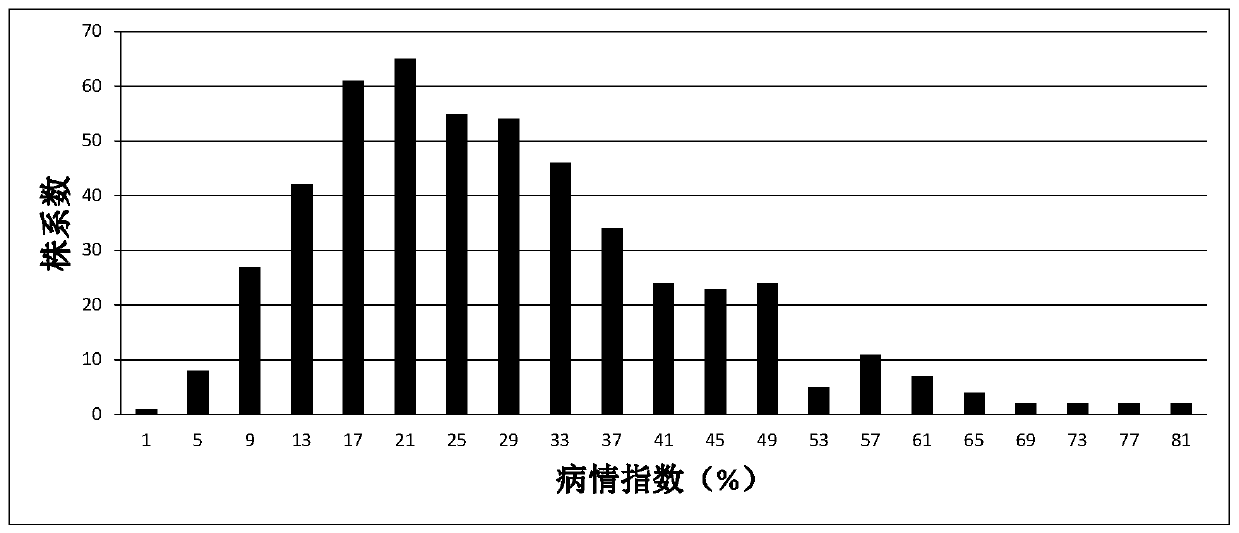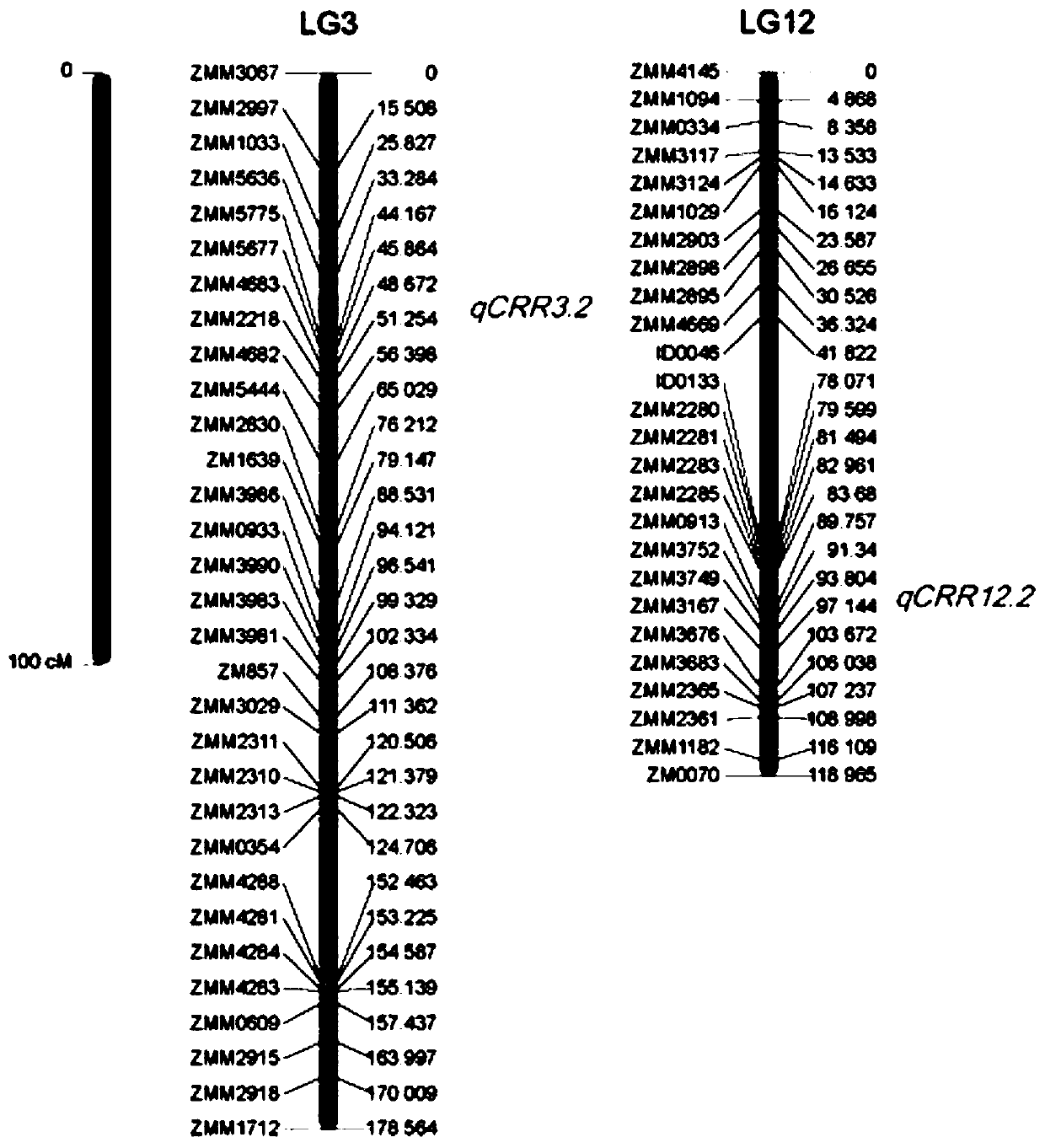The ssr molecular marker closely linked to the main gene locus of sesame resistance to stem spot blight and its application
A technology of molecular markers and major genes, which is applied in the determination/inspection of microorganisms, DNA/RNA fragments, biochemical equipment and methods, etc., can solve the problems of fast chain decay of natural populations, achieve convenient and fast detection, and improve selection efficiency , targeted effects
- Summary
- Abstract
- Description
- Claims
- Application Information
AI Technical Summary
Problems solved by technology
Method used
Image
Examples
Embodiment 1
[0055] Example 1: Discovery of SSR molecular markers closely linked to genes related to sesame stem spot blight traits
[0056] (1) Construction of Recombinant Inbred Lines (RIL) Populations Resistant / Susceptible to Stem Blight and Identification of Stem Blight Resistance
[0057] The stem spot blight-resistant variety of sesame Zhongzhi 13 was used as the female parent to carry out hybridization with the sensitive germplasm "Dense Capsule Sesame" to obtain F1 seeds. F1 plants selfed to produce F2 generation seeds, F2 plants selfed to produce F3 generation seeds, and F3 generation Start planting by row and selfing to produce seeds. Each row only harvests the seeds of one individual plant, and plants one row of the next generation, and so on, and finally obtains the F7 generation segregation population, that is, the recombinant inbred line (RIL) groups;
[0058] Identify the stem point blight resistance of the parents and RIL lines, and calculate the disease index of the RIL i...
Embodiment 2
[0094] Example 2: Application of Molecular Markers Closely Linked to Sesame Sesame Disease-resistant Main Genes in Sesame Disease-resistant Breeding
[0095] 500 F2 individual plants were obtained by crossing Zhongzhi 13 with another stem-spot blight-sensitive germplasm "Added Sesame", and 500 F2 individual plants were planted because field identification of stem-spot blight resistance of F2 individual plants was not possible. The corresponding 500 F2:3 families were obtained from each plant, and the stem spot blight resistance of the F2:3 families represented the stem spot blight resistance of the F2 single plant. Molecular identification of F2 individual plants at the seedling stage, the specific steps include the extraction of the total DNA of the leaves (specifically as the DNA extraction method in Example 1) and the use of the main effect gene loci qCRR12.2 and qCRR3.2 for stem spot blight resistance Molecular identification of 4 pairs of molecular markers ZZM0913, ZZM375...
PUM
 Login to View More
Login to View More Abstract
Description
Claims
Application Information
 Login to View More
Login to View More - R&D
- Intellectual Property
- Life Sciences
- Materials
- Tech Scout
- Unparalleled Data Quality
- Higher Quality Content
- 60% Fewer Hallucinations
Browse by: Latest US Patents, China's latest patents, Technical Efficacy Thesaurus, Application Domain, Technology Topic, Popular Technical Reports.
© 2025 PatSnap. All rights reserved.Legal|Privacy policy|Modern Slavery Act Transparency Statement|Sitemap|About US| Contact US: help@patsnap.com



